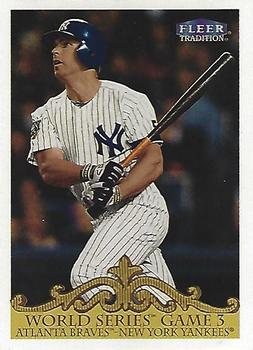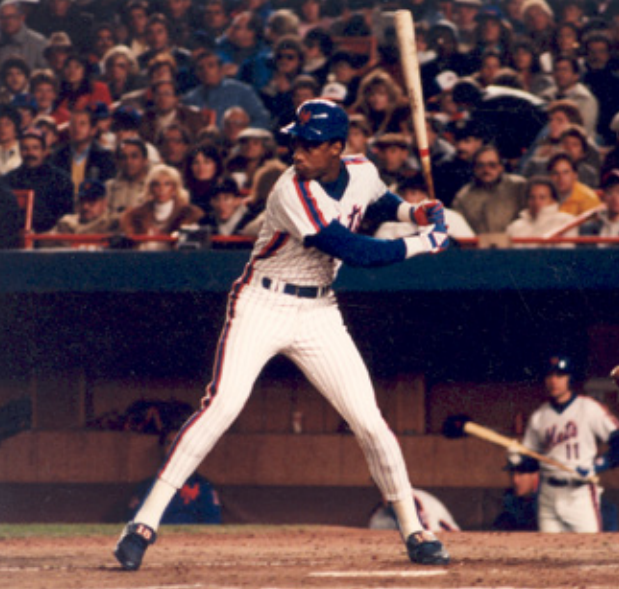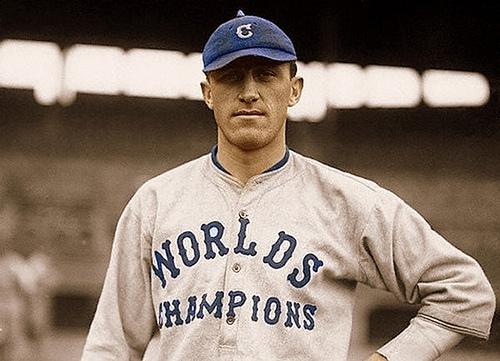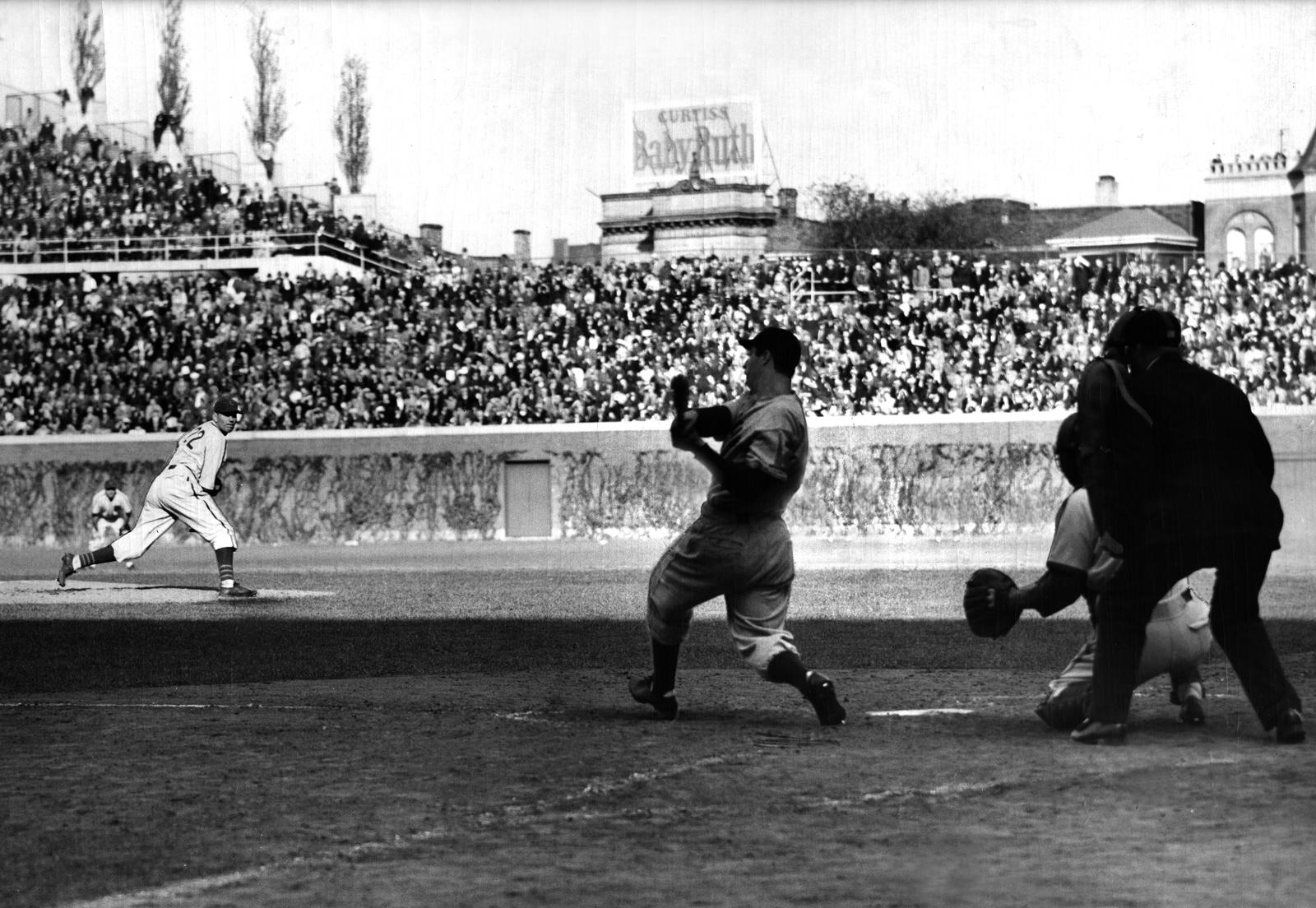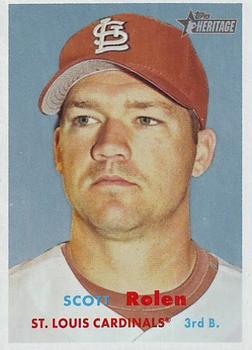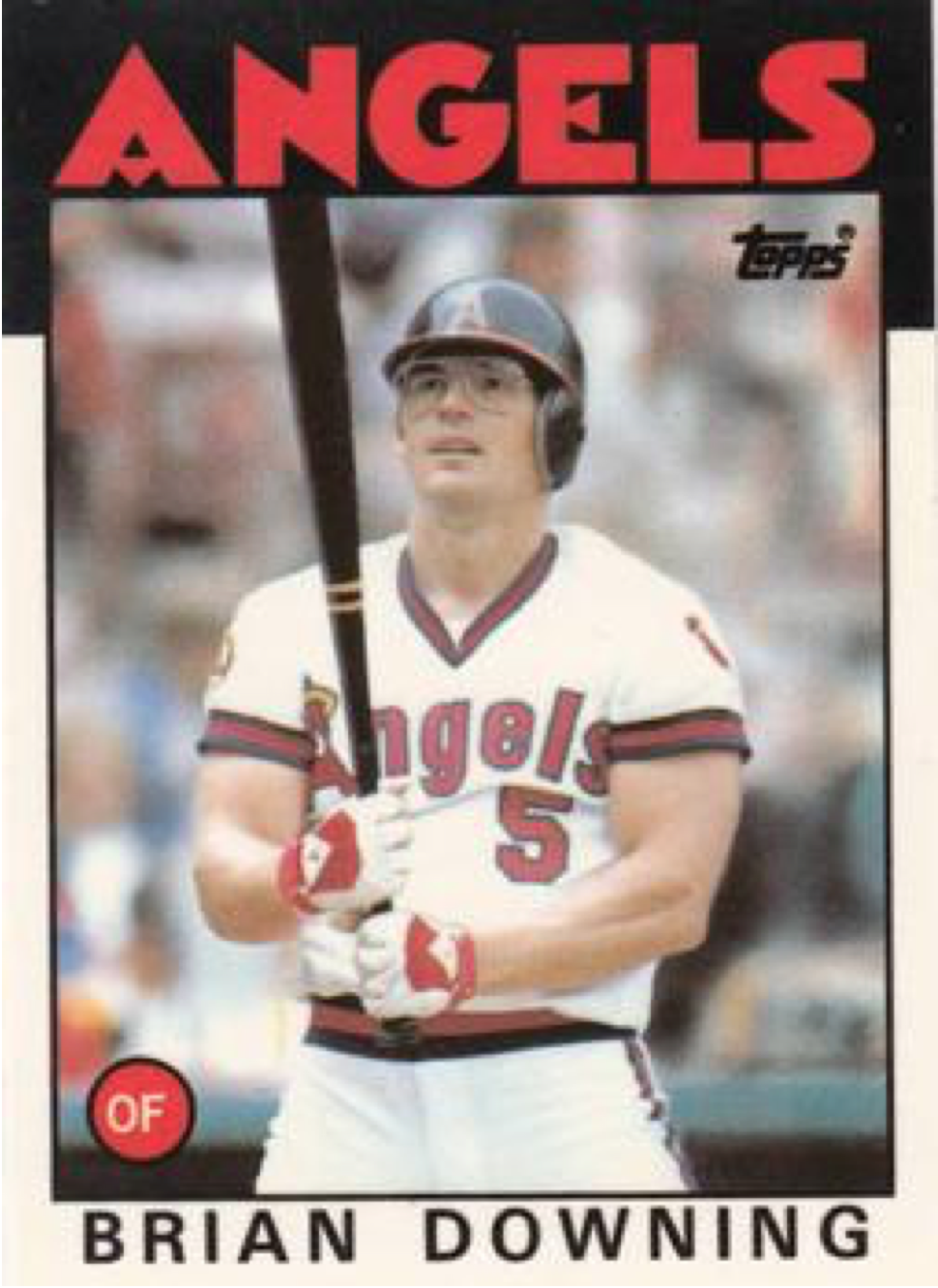October 7, 1939: ‘King Kong’ Charlie Keller’s two home runs help Yankees push Reds to brink
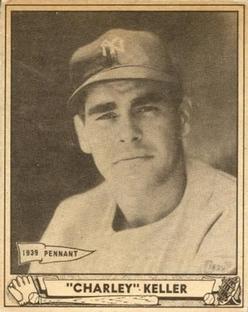 With New York having taken the first two games of the 1939 World Series in the Bronx, Cincinnati sent rookie Gene Thompson to the mound to oppose veteran Lefty Gomez of the Yankees for Game Three in the friendly confines of Crosley Field. The 22-year-old Thompson had a stellar debut, going 13-5 with a 2.54 ERA. In his 10th season in the Bronx, Gomez had gone 12-8 in 1939, a fine .600 winning percentage albeit one below his career .649 mark and also below the .702 record of the 1939 Yankees. While neither pitcher had a game to remember, Thompson repeatedly fell victim to gopher balls, putting the Reds in a deep hole in the Series.
With New York having taken the first two games of the 1939 World Series in the Bronx, Cincinnati sent rookie Gene Thompson to the mound to oppose veteran Lefty Gomez of the Yankees for Game Three in the friendly confines of Crosley Field. The 22-year-old Thompson had a stellar debut, going 13-5 with a 2.54 ERA. In his 10th season in the Bronx, Gomez had gone 12-8 in 1939, a fine .600 winning percentage albeit one below his career .649 mark and also below the .702 record of the 1939 Yankees. While neither pitcher had a game to remember, Thompson repeatedly fell victim to gopher balls, putting the Reds in a deep hole in the Series.
Thompson seemed nervous to begin the game against the weakest batter in the New York lineup in terms of regular season OPS, Frankie Crosetti (seven Yankee regulars had an OPS of .800 or greater; only Babe Dahlgren at .689 and Crosetti at .647 had subpar seasons with the stick.) “Thompson’s first serve … was a ball. It was a high, hard one ’round the eyebrows.”1 This possible purpose pitch led to a leadoff walk to Crosetti, who advanced to second on a groundout to first base by Red Rolfe.
Charlie Keller came up with one out and one on. He had only started regularly over the last two months of the season. “From then until the end of the 1946 season (minus 1944 and most of 1945, when he was in the military), Keller not only remained in the lineup, he became one of the most feared sluggers in the American League,” his SABR biographer has written.2 Against his fellow rookie Thompson, Keller “met the first pitch and from the crack of the bat there was no doubt of the destination of the ball. It sailed deep into the right field bleachers. … The park was so quiet that one could have heard the drop of a pin as the two Yankees pattered around the bases.”3 Thompson also walked Bill Dickey and threw a wild pitch in the first inning, but escaped without incurring additional damage when power-hitting George Selkirk, who had 21 homers and 101 RBIs in 1939, curiously bunted to Billy Werber at third to end the top half of the inning.
After retiring the first two Reds, Gomez “was forced to field a high bounder hit by Ival Goodman that came down back near second base and went for a hit. This effort seemed to aggravate Lefty’s side,”4 which “couldn’t be held in place by a girdle he wore when pitching. …”5 Cincinnati put together two more singles by Frank McCormick and Ernie Lombardi to cut the deficit to 2-1. Gomez fanned Harry Craft and, with New York in the lead, seemed to be in better shape after one inning than his opposite number.
Thompson had his only 1-2-3 inning in the second as the Yanks failed to get the ball out of the infield. Gomez struck out to end the inning. To start the second, manager Joe McCarthy replaced Gomez, who had averaged more than seven innings in his 26 regular-season starts but on this day “had nothing at all”6 due to injury, with Bump Hadley, who had a roller-coaster career. Having finished in the top five in American League ERA three times with the Washington Senators from 1927 to 1931, Hadley lost 20 games for the St. Louis Browns in both 1932 and 1933 before returning to Washington. New York traded for Hadley in 1936; backed by a better team, he again had a top-five ERA mark in 1939 at 2.98. Stretched out as a starter, Hadley had the stamina to pitch in long relief.
After striking out Wally Berger, Hadley pulled a Gomez by giving up three straight singles, the last of which, by Werber, scored Billy Myers to tie the game, 2-2. With runners at first and third with one out, Lonny Frey grounded to Babe Dahlgren, who threw to Dickey to get Thompson at the plate. But with two outs, Goodman delivered Werber with a clutch single to give the Reds a 3-2 lead, the first advantage Cincinnati had in the Series since the Reds went up 1-0 in the top of the fourth inning of Game One.
The lead in Game One had lasted only until the bottom of the fifth inning; the lead in Game Three did not even last a half inning. With two outs, Thompson, facing Keller for the first time since the homer, walked the Yankee slugger, which brought Joe DiMaggio to the dish. DiMaggio jolted New York’s second two-run homer of the game to put the Bombers back in front by a 4-3 count.
Neither team scored again until the top of the fifth. With one out, Red Rolfe singled, the only New York hit in the game that did not leave the park. Keller followed with his second deep homer to right as the Yankees lead swelled to 6-3. In facing 21 batters, Thompson had already yielded three homers, but manager Bill McKechnie stayed with his starter.7 Thompson retired DiMaggio, but Dickey followed with a homer to deep right, which finally terminated Thompson’s twirling. “The fault belonged partly to Mr. Thompson and partly to the architect who laid out the park,” a writer speculated. “When the architect put the right and centerfield fences on the same side of the Ohio River as home plate – instead of across the way in Kentucky – he was inviting massacre for his clients, and the massacre came today.”8 Lee Grissom relieved for the Reds with Cincinnati trailing 7-3.
Grissom pitched well, but the Reds could not harm Hadley, “who went through the remainder of the game with his sweeping curve.”9 In the sixth Cincinnati had two on with two walks thanks to patience at the plate by Myers and Werber, but Frey grounded to Joe Gordon to strand his mates. In the seventh with one out, McCormick singled and Hadley made a throwing error on a Lombardi comebacker to put runners at first and third, but Craft rapped into a 5-4-3 DP to keep the score the same.
In the eighth, Dickey almost had a second homer. “… He sent Craft leaping high against the bleachers in right center to snare a powerful smash. Had this blow dropped in the Yanks would have tied their own World Series record against the Cardinals in 1928.”10
The Reds threatened again in the ninth. With one out Frey walked and Goodman singled. Instead of turning to star reliever Johnny Murphy, a closer before the invention of the term, McCarthy stayed with Hadley. McCormick lined to Keller, one of the New York stars of the game, leaving the fate of the contest in the bat of the fated Willard Hershberger, who had come on to catch after Lombardi had left for a pinch-runner. Hershberger, too, skied to Keller, leaving the mighty, confident Yankees just one win away from taking New York’s fourth straight World Series. Yankees coach Art Fletcher calmly asserted, “It’s too bad this series isn’t going to last much longer [as] our boys are just beginning to hit.”11
This article was published in “Cincinnati’s Crosley Field: A Gem in the Queen City” (SABR, 2018), edited by Gregory H. Wolf. To read more articles from this book at the SABR Games Project, click here.
Notes
1 Lou Smith, “Reds to Sink or Swim With Big Paul This Afternoon,” Cincinnati Enquirer, October 8, 1939.
2 Nelson ‘Chip’ Greene, “Charlie Keller,” SABR BioProject, sabr.org/bioproj/person/56ec907f (accessed January 5, 2017).
3 “Broadside of Four Home Runs Gives Yanks Third Win in a Row,” The Sporting News, October 12, 1939: 6.
4 Gerry Moore, “Yanks’ Power Puts Them 3 Up by 7 to 3,” Boston Globe, October 8, 1939: B1. New York had another future Hall of Fame starter on the shelf. Red Ruffing, “who tossed a four-hitter to beat the Cincinnati Reds in the first game of the series … despite an arm not fully recovered from recent soreness, came up … with a new set of ailments. An official of the club revealed his left arm is also sore and that he complained this morning of a pain in his back.” “Red Ruffing Is Out of the World Series,” Boston Globe, October 8, 1939: B24.
5 Frank Graham, The New York Yankees (Carbondale and Edwardsville, Illinois: Southern Illinois University Press, 2002), 254.
6 Lee Allen, The Cincinnati Reds (Kent, Ohio: Kent State University Press, 2006), 273.
7 Before the game McKechnie had expressed his trust of Thompson in unusual terms: “He has everything, along with a good stomach.” Lou Smith, “Thompson and Gomez Are to Twirl Today,” Cincinnati Enquirer, October 7, 1939.
8 John Lardner, “Inviting Massacre,” Boston Globe, October 8, 1939: B24.
9 Bob Saxton, “Power Generates Energy, Latter Brings Forth Home Runs,” Cincinnati Enquirer, October 8, 1939.
10 John Drebinger, “Keller Drives Two,” New York Times, October 8, 1939.
11 John Kieran, “The Carnage at Crosley Field,” New York Times, October 8, 1939.
Additional Stats
New York Yankees 7
Cincinnati Reds 3
Game 3, WS
Crosley Field
Cincinnati, OH
Box Score + PBP:
Corrections? Additions?
If you can help us improve this game story, contact us.


